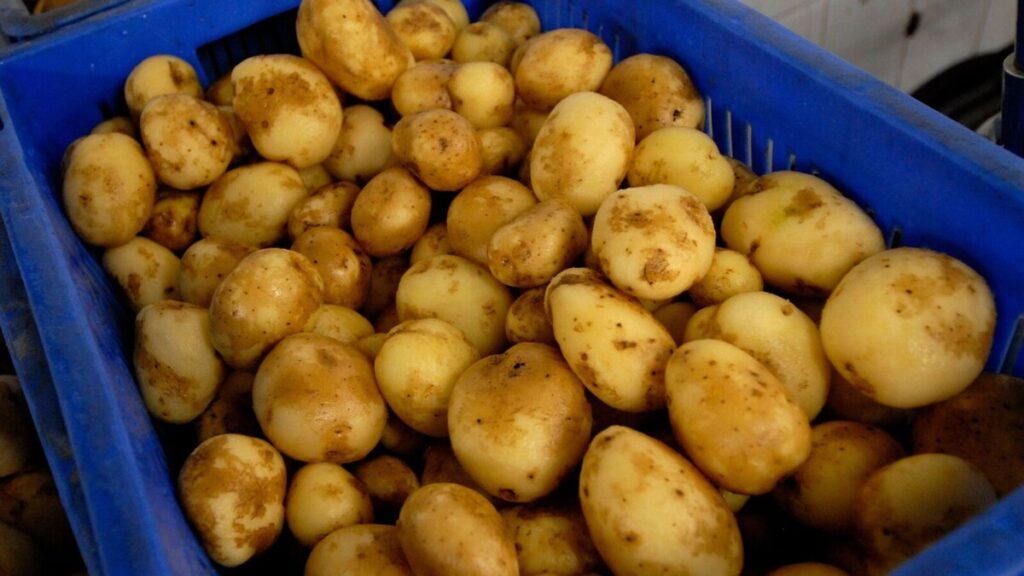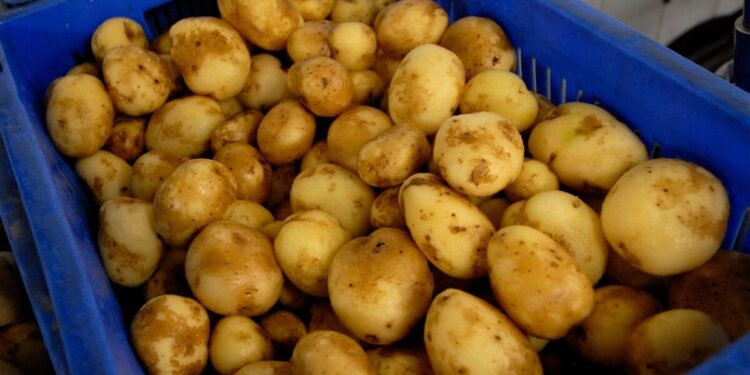-KH News Desk (editorial1@imaws.org)

India’s exports of processed potato products are experiencing a sharp rise, signaling the country’s rapidly growing foothold in Asia’s fast-expanding snack and convenience food supply chain, according to a recent note by the Global Trade Research Initiative (GTRI). The export turnover is predominantly driven by dehydrated potato granules and pellets, with additional significant growth observed in products like potato flour, starch, chips, and ready-to-eat potatoes.
Value and Growth Metrics
The most significant growth has come from dehydrated potato granules and pellets, which saw a surge of over 450 percent in just three years, jumping from $11.4 million in FY2022 to $63.3 million in FY2025. Exports of other value-added potato items have also expanded rapidly, tripling from $6.2 million in FY2022 to $18.8 million in FY2025, marking an overall increase of over 200 percent. Within this segment, potato flour, meal, and powder (used in soups, snacks, and bakery products) saw an exceptional surge of over 1,100 percent, rising from $0.4 million to $5.5 million. Furthermore, shipments of canned and ready-to-eat potatoes, along with potato chips and crisps, doubled to $5.3 million, and potato starch exports increased nearly fivefold to $2.6 million. These numbers signal continued strong momentum, with total exports reaching USD 30.2 million in just the first five months of FY2025.
Key Markets and Drivers
The rise reflects robust demand from Southeast and East Asia, where food manufacturers are rapidly scaling up the production of instant noodles, snack foods, and quick-service restaurant (QSR) items.
- Top Buyers: Malaysia is India’s largest buyer, with imports climbing from $5.1 million to $22.1 million. The Philippines and Indonesia recorded extraordinary growth of 600 percent and 924 percent, respectively. Japan and Thailand have also more than tripled their purchases. Collectively, these five destinations account for nearly 80 percent of India’s total exports.
- Competitive Advantage: The surge is fueled by a mix of regional demand and domestic capacity. India, with its lower costs, reliable year-round output, and close proximity to ASEAN countries, has stepped into a supply gap. This gap was created by Europe’s high energy costs and poor harvests and China’s inward shift toward domestic consumption.
- Trade Facilitation: India’s price competitiveness is further strengthened by preferential tariffs under the India-ASEAN Trade in Goods Agreement and efficient short shipping routes via ports like Mundra, Kandla, and Chennai.
Domestic Capacity and Outlook
On the supply side, Gujarat (specifically Mehsana and Banaskantha districts) and Uttar Pradesh have emerged as India’s processing powerhouses. These regions now host modern dehydration plants supported by robust contract farming and cold storage networks. India’s substantial 56-million-tonne potato crop, which includes high-solids varieties ideal for processing, has enabled exporters to easily scale production. Indian firms have also proactively upgraded quality, earning certifications like BIS, ISO, and HACCP, and diversified their product range into granules, flakes, and pellets tailored to multinational buyers’ specifications. The note concludes that India’s steady output, improving standards, and lower cost base have successfully transformed it from an occasional supplier into a reliable, year-round source for Asian food manufacturers.






